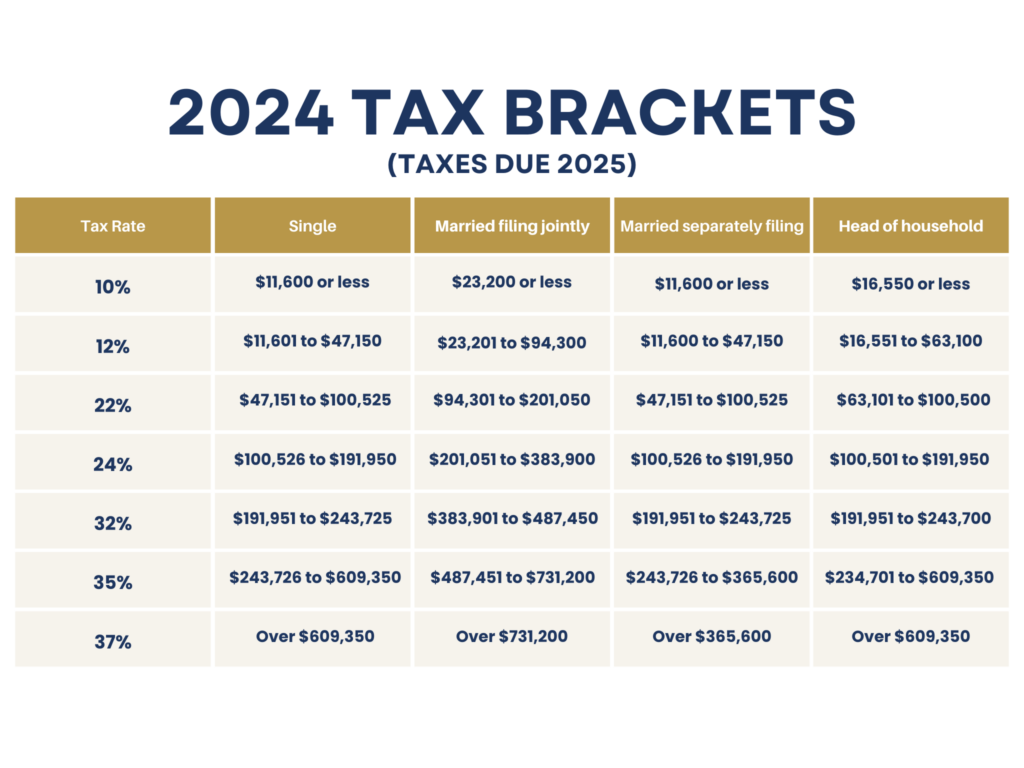
Navigating the 2024 Federal Income Tax Brackets
2024 is just another year on the calendar but a chapter in the ongoing saga of your financial story. The question echoing in minds across the nation is, "2024 federal income tax brackets — how much will you pay?" This guide isn’t a crystal ball, but it’s the next best thing. Join us as we peer into the future, unraveling the intricacies of the 2024 federal income tax brackets. It’s not just about the numbers; it’s about empowering you to navigate the evolving financial terrain with confidence.
Understanding Tax Brackets
Before delving into the specifics of 2024, let’s ensure we’re on the same page. When we talk about Tax Bracket Basics, we’re breaking down how tax brackets function, demystifying the jargon that often accompanies discussions about taxation. Understanding these basics is crucial for navigating the intricacies of the tax system. Additionally, when we touch on Marginal Tax Rates, we’re addressing the concept that the highest tax rate applies only to the income within the top bracket. This means that as your income increases and you move into higher tax brackets, the elevated tax rate applies solely to the portion of your income within that specific bracket.
2024 Federal Income Tax Brackets

How Much Will You Pay in 2024?
The first crucial aspect is identifying your tax income, encompassing various sources such as wages, bonuses, and additional income streams. This comprehensive assessment ensures that all relevant sources contributing to your income are taken into account.
Once your taxable income is determined, the next step involves applying the tax rates associated with each specific income bracket. This process involves allocating the respective tax rates to the corresponding portions of your income within the designated brackets. By breaking down these steps, you gain a clearer insight into how your overall tax liability is calculated, allowing for a more informed approach to managing your financial obligations.
Practical Scenarios and Examples
Let’s bring theory to life with real-world examples:
Scenario 1: An individual with a taxable income of $35,000 falls into the 12% bracket, resulting in a tax liability of $4,153.
Scenario 2: A couple with a combined income of $150,000 navigates the brackets, arriving at a total tax liability of $20,933.
Key Considerations for 2024
Considering the impact of inflation on income thresholds is a crucial aspect of understanding the dynamics of the tax system.
In the context of 2024, adjustments are anticipated to accommodate the effects of inflation, leading to slight shifts in income ranges. These adjustments are essential to ensure that the income thresholds align with the changing economic landscape, maintaining the integrity of the tax brackets.
By anticipating and incorporating these adjustments, tax authorities aim to uphold fairness and accuracy in taxation, acknowledging the impact of inflation on individuals’ purchasing power and overall financial circumstances. This awareness allows taxpayers to stay informed about potential changes in their tax liabilities, fostering a more transparent and equitable tax system.
Conclusion
The 2024 federal income tax brackets are not just numbers on a page; they’re the guideposts for your financial journey. This guide isn’t about predicting the future; it’s about arming you with the knowledge to face it confidently. As you step into 2025 and beyond, may you navigate the tax brackets with clarity, make informed financial decisions, and build a future that’s not just financially secure but personally fulfilling. Because it’s not just about the money you make; it’s about the life you create.
If navigating the complexities of tax brackets feels overwhelming, Priority Tax Relief is here to help. Whether you’re facing tax debt, need assistance with deductions, or want to ensure you’re maximizing your returns, our team of experts is ready to guide you through every step.
Frequently Asked Questions: 2024 Federal Income Tax Brackets
What are the highest taxed states in 2024?
States with the Highest Tax Rates
In 2024, California, Hawaii, New York, New Jersey, and Washington D.C. are among the states with the steepest marginal state income tax rates, each exceeding a top rate of 10%.
State | Grade | Tax as % of Income | |
|---|---|---|---|
1. | Illinois | F | 13.0% |
2. | New York | F | 13.7% |
3. | Connecticut | D | 11.7% |
4. | New Jersey | D | 13.5% |
5. | Iowa | D | 9.7% |
6. | Kansas | D | 9.6% |
7. | Nebraska | D | 9.2% |
8. | Massachusetts | D | 12.0% |
9. | Michigan | D | 9.4% |
10. | Vermont | D | 10.1% |
What are the tax brackets in the United States?
The United States has a total of seven federal income tax brackets, which feature rates of 10%, 12%, 22%, 24%, 32%, 35%, and 37%. If you happen to be among the fortunate individuals earning enough to be in the 37% bracket, it doesn’t imply that all of your taxable income is taxed at that rate. Rather, the 37% represents your highest marginal tax rate.
What are the New York state tax brackets for 2024?
| Tax rate | Taxable income bracket |
|---|---|
| 5.25% | $11,701 to $13,900. |
| 5.5% | $13,901 to $80,650. |
| 6% | $80,651 to $215,400. |
| 6.85% | $215,401 to $1,077,550. |
What is the most tax-friendly state to live in?
State | Grade | Tax as % of Income | |
|---|---|---|---|
1. | Wyoming | A | 3.3% |
2. | Nevada | A | 4.3% |
3. | Tennessee | A | 4.3% |
4. | Florida | A | 5.0% |
5. | Alaska | A | 4.3% |
6. | Washington | A | 6.5% |
7. | South Dakota | A | 4.5% |
8. | North Dakota | A | 4.4% |
9. | Arizona | A | 5.8% |
10. | Montana | B | 6.1% |
5. Are income tax brackets adjusted?
Yes, income tax brackets are typically adjusted annually for inflation. This adjustment, known as "indexing," is designed to prevent "bracket creep," which happens when inflation pushes taxpayers into higher tax brackets even though their real purchasing power hasn’t increased. In the United States, for example, the Internal Revenue Service (IRS) adjusts federal income tax brackets each year based on inflation, ensuring that the tax rates are applied more fairly relative to the cost of living.
What are the current federal tax brackets?
Federal tax brackets are updated annually, often adjusted for inflation. The specific rates depend on your filing status (e.g., single, married filing jointly, head of household). You can find the current year’s tax brackets on the IRS website.
Are tax brackets the same for all filing statuses?
No, federal tax brackets vary depending on your filing status. The IRS provides different brackets for single filers, married couples filing jointly, married couples filing separately, and heads of household.
Do tax brackets change every year?
Yes, tax brackets are generally adjusted each year for inflation, ensuring that taxpayers aren’t pushed into higher brackets due to rising living costs. The IRS releases updated tax brackets annually.
What is the highest federal tax bracket?
The highest federal tax bracket applies to individuals or households with income above a certain threshold. For example, in 2023, the top tax rate is 37%, applying to incomes over $578,125 for single filers and $693,750 for married couples filing jointly.
Do state taxes have separate brackets from federal taxes?
Yes, many states have their own income tax systems with separate tax brackets. State tax rates and brackets vary widely, with some states having no income tax at all.
How can I reduce my taxable income within federal tax brackets?
You can reduce your taxable income by taking advantage of deductions, credits, and retirement account contributions. Reducing your taxable income may lower the amount of income subject to higher tax brackets, saving you money on taxes.







